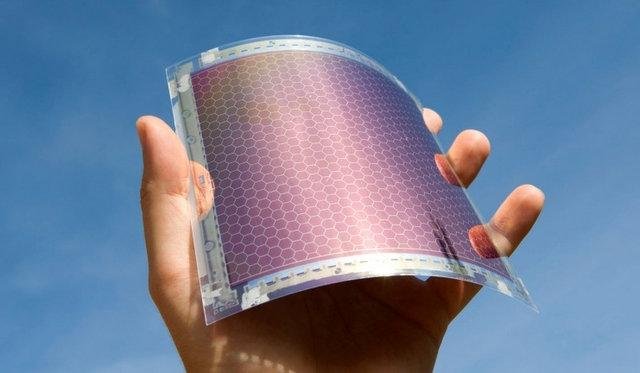Polymer Solar Cells Market Challenges Limiting Efficiency and Commercial Viability Expansion

The Polymer Solar Cells Market has attracted significant attention as a promising alternative to traditional photovoltaic technologies. With advantages such as flexibility, lightweight design, and potential for low-cost production, polymer solar cells (PSCs) offer innovative applications in portable electronics, building-integrated photovoltaics, and wearable devices. However, despite these promising attributes, several key restraints limit the widespread adoption and growth of the polymer solar cells market. Understanding these barriers is crucial for stakeholders aiming to overcome challenges and unlock the full potential of this evolving technology.
1. Limited Power Conversion Efficiency
One of the primary restraints in the polymer solar cells market is the relatively low power conversion efficiency (PCE) compared to silicon-based solar cells. Although advances have been made in improving polymer materials and device architectures, PSCs typically achieve efficiencies in the range of 10-15%, whereas silicon cells often exceed 20%. This efficiency gap limits their competitiveness, especially for large-scale energy generation where maximizing energy output is critical.
The efficiency challenges stem from intrinsic properties of organic polymers, including charge carrier mobility, recombination losses, and imperfect light absorption. Continuous research is needed to develop new polymer blends and molecular designs that can improve PCE without compromising other device qualities.
2. Poor Long-Term Stability and Durability
Another significant market restraint is the limited operational stability of polymer solar cells. Unlike inorganic solar cells, PSCs are more susceptible to degradation caused by exposure to oxygen, moisture, heat, and ultraviolet (UV) radiation. This vulnerability leads to a faster decline in performance over time, reducing the lifespan of the solar cells and increasing maintenance or replacement costs.
Stability issues arise from the chemical structure of the polymers and the interfaces between layers in the device. To be commercially viable, polymer solar cells require improved encapsulation techniques and more robust materials that can withstand environmental stressors while maintaining performance.
3. Scalability and Manufacturing Challenges
While polymer solar cells are touted for their potential in low-cost, roll-to-roll manufacturing, translating laboratory successes into scalable industrial production remains challenging. Achieving consistent, defect-free thin films over large areas requires precise control of material processing and deposition techniques such as printing or coating.
Moreover, the need for specialized equipment and stringent quality control measures increases capital expenditure and operational costs. Variability in polymer batches and sensitivity to processing conditions can lead to inconsistent product quality, impeding mass production efforts.
4. Material Cost and Availability
Although polymer solar cells can be cheaper than traditional silicon cells in theory, some high-performance polymers and additives used in PSCs can be expensive or have limited availability. The synthesis of novel conjugated polymers involves complex chemical processes, which can raise material costs, especially in the early stages of commercialization.
Additionally, the reliance on rare or toxic solvents during manufacturing raises environmental and regulatory concerns. These factors can inflate the overall cost of polymer solar cells, offsetting some of their inherent cost advantages and slowing market penetration.
5. Limited Market Awareness and Adoption
Despite growing research interest, the polymer solar cells market still faces low awareness among end-users and investors compared to more established photovoltaic technologies. The perception of PSCs as an emerging, less reliable technology creates hesitation among commercial buyers and policymakers.
This limited market confidence restricts funding for large-scale pilot projects and delays integration into existing energy infrastructures. Educating stakeholders about the unique benefits and addressing misconceptions will be key to accelerating acceptance and deployment.
6. Regulatory and Standardization Issues
The polymer solar cells industry also grapples with a lack of universally accepted testing standards and certification protocols. This regulatory uncertainty complicates product validation and approval, especially for applications in critical sectors such as building-integrated photovoltaics and consumer electronics.
Without clear guidelines, manufacturers face difficulties in demonstrating reliability, safety, and environmental compliance. Establishing global standards tailored to polymer solar cells would facilitate market growth and build trust among consumers and investors.
Conclusion
While the Polymer Solar Cells Market presents exciting opportunities for the renewable energy sector, several critical restraints hinder its rapid expansion. Limited power conversion efficiency, poor long-term stability, manufacturing scalability issues, and material costs remain significant challenges. Moreover, low market awareness and regulatory uncertainties further slow down widespread adoption.
Addressing these barriers will require coordinated efforts across research, industry, and policy to improve material science, enhance production techniques, and establish supportive frameworks. Overcoming these restraints could unlock the full potential of polymer solar cells, enabling flexible, lightweight, and cost-effective solar energy solutions for a sustainable future.





